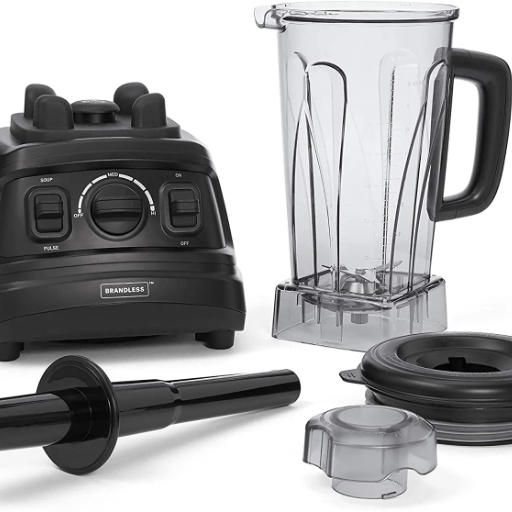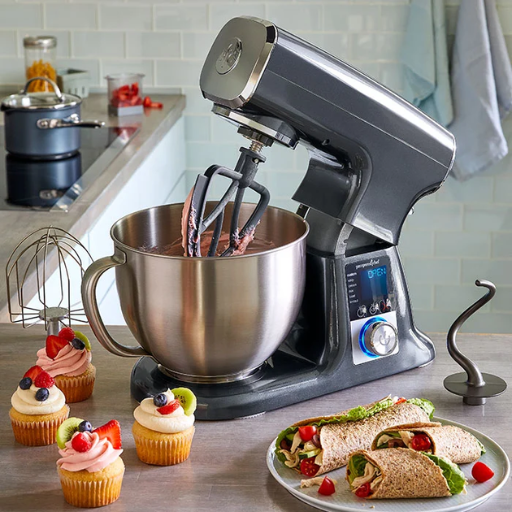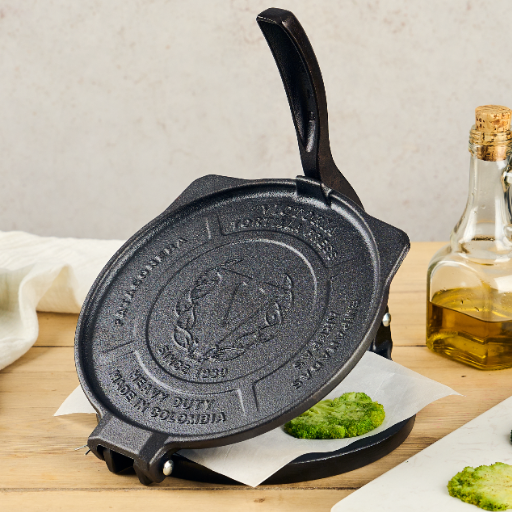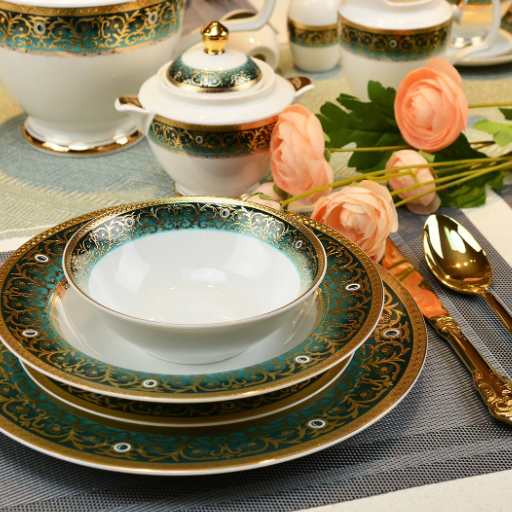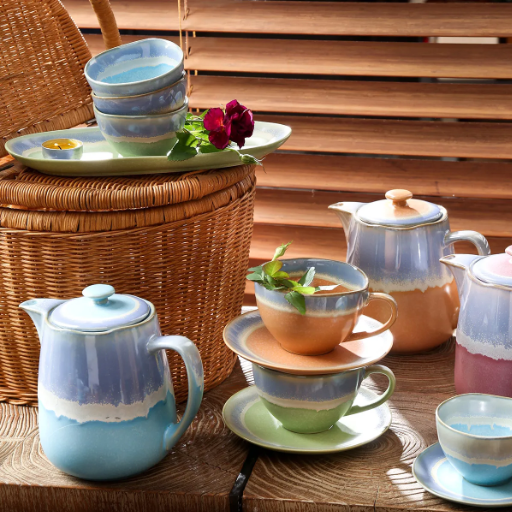An oval stock pot is one of the most useful and practical tools to have in the kitchen, as it boasts a wide range of uses. The versatility of stock pots makes cooking hearty stews, flavorful broths, or any meat-accommodating recipes a lot easier. However, selecting an oval stock pot might feel daunting as there are so many different brands and options available in the market. With the help of this guide, you will know the most appropriate features and materials to look for and leading experts’ opinions and will make the right choice for yourself. By the end, you’ll be well-equipped to choose an oval stock pot suitable for all your culinary needs while boasting high efficiency, style, and durability.
What is an Oval Stock Pot?
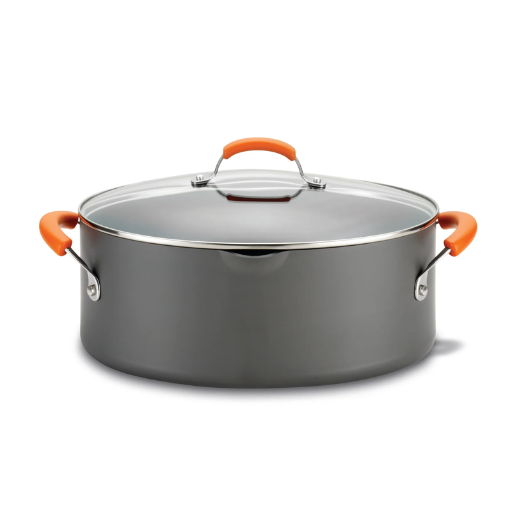
An oval stock pot is convenient for cutting and cooking large pieces of meat, fish and poultry. It is uniquely designed to speed up the cooking process while still providing evenly cooked meat. Their all purpose cooking characteristic enables them to endure boiling, braising and simmering. Oftentimes they are manufactured using aluminum, stainless steel and enameled cast iron. These materials are favored because of the valuable addition they bring to the kitchen. When using these pots for braising, most of them come with tightly closed lids to improve efficiency in steam trapping, thus aiding the cooking process by forcing the meat to tenderize.
Features of an Oval Stock Pot
- Enhanced Heating Efficiency
The most important factor that can make or break the shape of a vessel is heating balance, and for oval stock pots this is not an issue. Being longer than average means they can serve plenty of people while retaining everyone’s ideal doneness. Heat equilibrium enhances precision cooking, therefore aiding enameled cast iron models which provide heat retention of ±5°C for a long period of time
- Capacity for Large Meals
Like other types of cooking pots, oval pots made out of stainless steel and cast iron are also quite durable and wear-resistant. They are designed to withstand wear and deformation when boiling, braising or simmering. The oval-shaped stock pots tend to have capacities between 6 and 14 quarts. The oval stock pot has gained a lot of popularity for instance within the catering industry as it can be used for preparing portions for a family or even in bulk.
- Durable Construction Materials
Stainless steel, aluminum, and enameled cast iron are materials made to last which fomd the basis of the pots. Cast iron and stainless steel have their own set of advantages. Stainless steel models are corrosion resistant, and cast iron excels in heat retention letting them slow cook efficiently. Moreover, cast iron models tend to have a multi-layered base which braizes thermal conductivity as well.
- Tight-Fitting Lids
Many oval stock pots have ergonomically designed snug lids that are easy to use with one hand. These lids assist the pots in maintaining moisture, flavor, and even vital nutrients. As an example, using a stainless steel lid instead of a loose one reduces evaporation by 30%, allowing more efficient cooking.
- Ergonomic Handles
Sturdy heat resistant grips are built to withstand movement whilst carrying a fully loaded pot. During transportation, grips covered in silicone, matte coated cast iron or riveted stainless steel aid by lessening fatigue to the user’s hands.
Benefits of Using an Oval Stock Pot
- Optimized Shape for Large Cuts of Meat
The described elongated ovals provide rotisserie chicken and sizeable chunk of meat without needing to carve and chop first. They save the work of trimming meat while making sure Nice, uniform cooking by making certain heat is evenly distributed.
- Enhanced Space Utilization on Stovetops
When multiple pans are placed on the stove, the pan serving as a burner occupies space and reduces clutter. With its oval shape, on top of being placed on the stove easily, it allows other pans to be placed atop as well.
- Versatile Compatibility with Ovens and Stovetops
Oval stock pots, as with other types of stock pots, are used for braising, baking, roasting, and any activity performed on top the stove. Some models are made of enameled cast iron which can withstand a temperature of 500°F (260°C). This makes them very valuable for many forms of cooking.
- Improved Heat Distribution
The wide shape of oval stock pots improves heat application to the bottom of the pot, therefore improving evenness of cooking. Research suggests this may reduce the cooking time of food by 15% when compared to round pots depending on the heat source.
- Tighter Lids for Moisture Retention
Many oval stock pots are sold with precision lids that fit tightly to the body of the pot to reduce moisture loss during cooking. This feature makes slow-cooked recipes more effective by minimizing moisture loss and retains up to 90% of natural juices in some cases.
Common Uses for Oval Stock Pots
Because of their versatility in cooking, oval stock pots are popular. They are especially useful for braising large beef cuts and pork shoulders, as elongated objects provide better cooking surface heat distribution. Whole poultry is also easy to fit, needing little trimming and is therefore cage efficient. Chefs also saw the use of ovals for soups and stocks, as braising them promotes simmering, giving flavor infusion.
They are also useful for poaching or steaming fish. The extended shape allows ample space for larger fillets which prevents delicate proteins from being evenly cooked or overcooked. Oval pots also work best for casseroles and layered dishes since they look good while serving at the table. Chefs and home cooks aiming for accurate and efficient results in cooking have these all purpose pots as their main tools in the kitchen.
How to Choose the Right Stockpot Size?
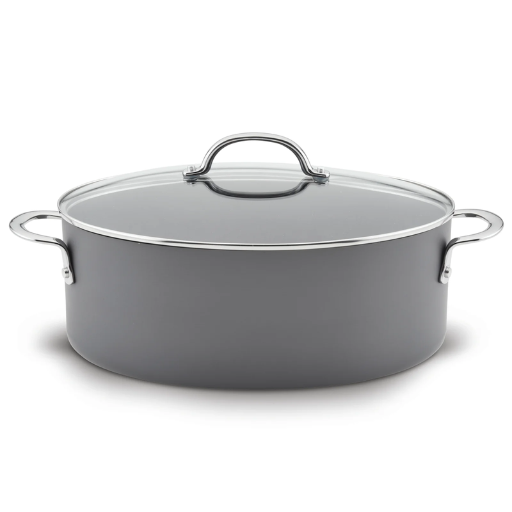
Consider stockpot size carefully as it will depend on your needs and quantity of food prepared. For a small household, a 4-6 quart is sufficient. Families that frequently prepare stew will benefit from an 8-12 quart, finding it useful without much burden. For larger meals, or recipes like braised bone broths, stock pots 16-20 quart are ideal. Make sure not to overlook stovetop space and cupboard storage discretion to prevent clutter.
Understanding Quart Measurements
A quart is fluid 32 ounces and almost a liter, 0.946 in metric terms. Acquaintance with quart measurements are important for scaling recipes, designing the right kitchen pots and pans and containers. For clarifying the US customary system, a gallon is equivalent to 4 quarts and a pint is 0.5 quarts. Surprisingly, soup stock is not the only recipe that makes use of liquids measured in quarts. Dry ingredients also need quick precise volume measurement and quarts serves well. Knowing these conversions aids in accuracy and consistency regardless of the scale of meal preparation.
Choosing Between 8-Quart and 6-Quart Options
When choosing between the 8-quart and 6-quart options, both the cooking needs and the results require optimally achieving considering the capacity. The 8-quart option benefits people who generally prep meals, have large families, or need to cook large portions like soups, stews and pasta dishes for events or family gatherings. It has enough headspace to prevent spills caused by boiling or stirring, especially for recipes that increase in volume due to cooking. A 6-quart option serves smaller households better as it is more practical in case there is limited kitchen space and when preparing standard-sized meals for 2-4 people. Furthermore, the smaller portion ensures effective heating and quicker cooking times. Both options could differ in the construction material used which includes stainless steel, aluminum, or non-stick coated materials that would influence the cleaning ease and the heating efficiency. For people with mixed priorities, the 8-quart model offers variety as it can take on more recipes, whereas the 6-quart is more practical and efficient for everyday cooking.
Are Nonstick Options Available for Oval Pots?
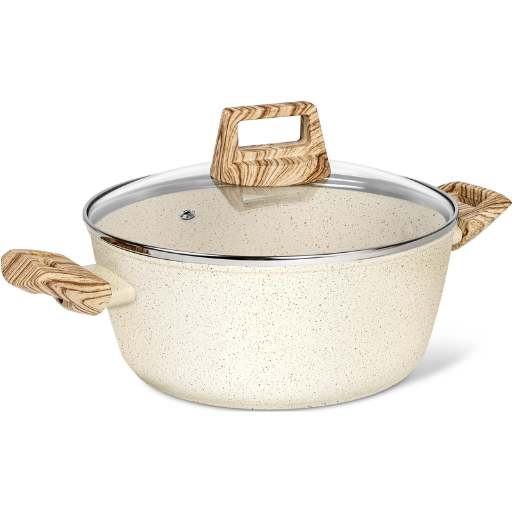
There are nonstick variants of oval pots. Some companies do manufacture oval pots with nonstick coatings which are intended to make cleaning easier as well as prevent food from sticking. Such coatings are usually composed of durable and heat resistant materials such as PTFE (Teflon) or ceramic. Nonstick oval pots are perfect for braising or roasting as they prepare several foods and are less likely to allow delicate food to burn or get stuck. While buying nonstick oval pots, it is crucial to check if the methods of cooking and care instructions are suitable towards your methods to ensure the coating lasts.
Advantages of Nonstick Coatings
Below are the reasons why modern cookware is mainly made with an nonstick coating:
- Ease of Food Release
Nonstick cookware enables food to slide off during cooking without requiring additional fat, oil, or cooking sprays. Nonstick coatings on pans permit the use of fats in cooking to be minimized by as much as 50%. This promotes healthier cooking.
- Simplified Cleaning Process
All nonstick pans have smooth surfaces therefore, they are easy to clean. Oil and food do not easily adhere to nonstick surfaces reducing the scrubbing effort and the use of strong detergents.
- Enhanced Heat Distribution
A nonstick oval pot serves multiple purposes which include simmering, slow cooking, steaming and preparing some of the most delicate dishes. Limitless applications make the pot perfect for fulfilling all culinary needs.
- Durability and Longevity
Investments into nonstick technologies reinforce the strength of PTFE or Ceramic composites, thus the durability of such coats is marvelously improved. Properly maintained, these coatings will exhibit complete nonstick properties for many years.
Nonstick coatings have transformed cookware by combining ease of use and efficiency. These changes appeal to cooking enthusiasts and skilled chefs alike.
Best Nonstick Oval Stock Pots on the Market
- Calphalon Premier Hard-Anodized Nonstick Oval Stock Pot
This model maintains a high level of durability and even heat distribution thanks to its hard-anodized aluminum construction. The three-layer nonstick interior offers outstanding food release and is metal utensil safe. It also has a tempered glass lid which is used to monitor the progress of cooking without needing to uncover the dish, and comes in a five-quart size.
- Cuisinart Ceramica XT Nonstick Oval Stock Pot
Health-conscious consumers looking for safer options would prefer this eco-friendly choice that features titanium reinforced ceramic nonstick coating which is both PTFE and PFOA free. The aluminum core provides quick heating while the stay cool handles add protection and comfort. It comes in a size of 5.5 quarts which allows for preparation of diverse recipes.
- All-Clad NS1 Nonstick Induction Oval Stock Pot
This stock pot is designed for induction cooktops. It is made out of heavy gauge bonded material which ensures that the pot maintains consistent control of heat. The pot has a compact size with 4-quart capacity which is ideal for smaller kitchens or meals and comes with scratch resistant nonstick surface for easy cleaning.
- Anolon Advanced Hard-Anodized Nonstick Oval Roaster
Recognized for its multifaceted features, this versatile stock pot comes with a premium performance hard-anodized aluminum base for quick heat distribution and an ultra-durable nonstick surface. With a capacity of 7 quarts, the stock pot can cater to larger recipes and gatherings while the dual riveted handles allow easy lifting.
Like all stock pots, these models are designed with several modern features ensuring convenience for the users such as ease of cleaning and maintenance. As such, they serve many purposes and satisfy diverse needs and preferences when it comes to daily and special cooking and culinary tasks.
What Materials are Best for Oval Stock Pots?

As with most pots, the material most suitable for oval stock pots will be differentiated depending on what they will be used for and the cooking performance required. When accompanied with aluminium or copper cores, stainless steel remains highly recommended for its durability, rust resistance, and even heat distribution. For people seeking nonstick options, hard anodized aluminium provides excellent options as it possesses a long-lasting nonstick surface along with superb heat conductivity. Slow cooking and heat retention require precise control, and enameled cast iron serves both excellently, making it an amazing option for recipes that require a long cook time. Each of these materials bring their own strength to the table and guarantee problem-free home cooking.
Cast Iron vs. Stainless Steel
|
Key Point |
Cast Iron |
Stainless Steel |
|---|---|---|
|
Heat Retention |
Excellent, retains heat for long time |
Good, but loses heat quickly |
|
Heat Distribution |
Even, but slower to heat up |
Even and heats up faster |
|
Weight |
Heavy and robust |
Lightweight compared to cast iron |
|
Durability |
Extremely durable, lasts generations |
Very durable, resistant to damage |
|
Maintenance |
Requires seasoning, prone to rust |
Easy to maintain, does not rust |
|
Surface |
Develops natural nonstick with use |
Nonstick depends on proper technique |
|
Response to Acidity |
Can react with acidic foods |
Safe for acidic ingredients |
|
Cooking Methods |
Best for frying, baking, and searing |
Suitable for most cooking techniques |
|
Price Range |
Affordable |
Moderate to expensive |
|
Cleaning |
Hand wash recommended, avoid soap |
Dishwasher safe in most cases |
Hard Anodized vs. Aluminum Oval Pots
|
Key Point |
Hard Anodized Oval Pots |
Aluminum Oval Pots |
|---|---|---|
|
Durability |
Highly durable, scratch-resistant |
Less durable, prone to dents |
|
Weight |
Relatively heavy |
Lightweight |
|
Heat Distribution |
Even and efficient |
Uneven in some cases |
|
Nonstick Properties |
Excellent, requires less oil |
Less effective over time |
|
Safety |
Non-toxic, PFOA-free coating |
May react with acidic foods |
|
Maintenance |
Easy to clean, hand wash recommended |
Easy cleaning, dishwasher safe |
|
Cost |
Higher price |
More affordable |
|
Heat Compatibility |
Works on all stovetops |
Limited to certain stovetops |
|
Surface Finish |
Glossy, sleek appearance |
Often matte or shiny, varies |
|
Scratch Resistance |
Resistant to scratches |
More prone to surface damage |
|
Longevity |
Lasts years with good care |
Shorter lifespan |
|
Usability in Oven |
Oven-safe up to 500°F |
Check labels for oven safety |
|
Cooking Efficiency |
Retains heat effectively |
Loses heat faster |
|
Environmental Impact |
Generally eco-friendly coatings |
Can have more environmental impact |
Choosing Between Enamel and Non-Enamel Options
You must consider non-enamel and enamel options carefully, as they both have their advantages and disadvantages. From a price perspective, both fit within budget to provide value for money. Non-reactive surfaces make enamel cookware safe to use with acidic ingredients and allows for even heat distribution, which is beneficial in slow cooking and recipes that demand temperature precision. Dishes that contain tomatoes or those that are citrus-based greatly benefit from its use. Its cons include heaviness and high price of non-reactive cookers.
Heavier non-enamel cookers made from stainless steel or non-stick materials are beneficial as they are lightweight and versatile. They also respond faster to heat and are better suited for everyday cooking. Everyday and fast cooking prefer responsiveness to pauses for tactical and methodical planning. Drawbacks such as a shorter lifespan due to surface scratches also exist, but other models that are reinforced offer an increase in durability. A comment to make for eco-friendly consumers is that although there is less environmental impact with non-enamel cookware, modern techniques used to produce enamel cooking pots put more emphasis on enamel and paint that is eco-friendly.
How to Maintain and Clean Your Oval Stock Pot?
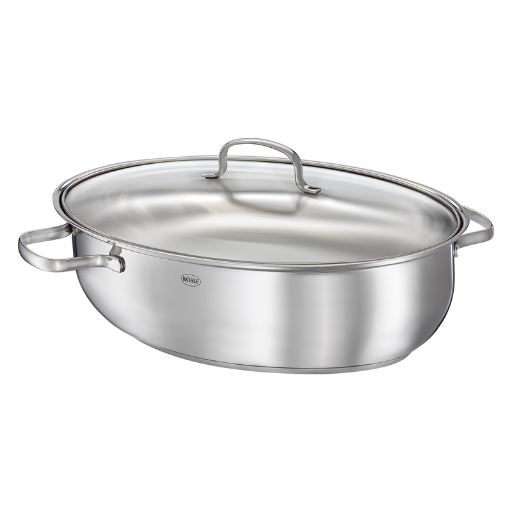
- Hand Wash for Longevity
Although most oval stock pots come with a dishwasher-safe labeling, the use of warm water with mild dish soap is strongly recommended to hand wash the pot in order to preserve the pot’s life and coating. Do not use abrasive pads or harsh soaps because they scrub, scratch or inflict damage.
- Remove Stubborn Residue Safely
Soak the pot in warm water mixed with a little baking soda for twenty minutes to lift any stubborn food residue. Afterward soak it for an additional ten minutes without the mixture. Persuading it gently with a soft sponge or flimsy nylon scrubber will easily buff away any remaining residue.
- Avoid Thermal Shocks
Avoid drastic temperature changes when cleaning this stock pot. For example, rinsing a hot stock pot with cold water can cause it to warp and damage enamel coatings.
- Dry Thoroughly After Cleaning
To maintain the stock pot’s pristine condition, always hand dry exposed metal to avoid rusting and hard water spots.
- Store Properly
To avoid chipping or scratching surfaces when storing pots, place soft cloths between stacked pots as protective layers.
If these simple steps are followed, your oval stock pot will remain in excellent condition for dependable use over many years.
Best Practices for Cleanup
Regular maintenance in cleaning enhances your oval stock pot’s performance, looks, and even affects its lifespan. Its best to let the pot cool completely before cleaning. Allow the pot to fully cool as exposing hot pots to cold water can cause warping. A non-abrasive sponge coupled with warm water paired with mild dish soap will do the trick, ensuring all food residues are removed without damage. A gentle scrub is all that is needed, especially alongside steadfast burnt residue removal baking soda paste. For tougher stains, a baking soda and water paste applied, left for a few minutes, then scrubbed off with a soft sponge works miracles. Scrubbing off burnt food with courses tools like steel wool and other abrasive equipment is a big no—they weaken the protective layer, leading to easily compromised the pot’s integrity. Following these methods allows for burn residue scrubbing and cleaning without affecting the pot’s durability, efficiency, and all the while enhancing its lifespan.
Is Dishwasher Safe an Important Feature?
The convenience of the dishwasher safe feature is appreciated by many consumers. A stock pot which is marked as dishwasher safe will make cleaning up much easier after meals. There are some trade offs too, which need to be considered. Soaking in hot water with harsh detergent could lead to gradual damage, such as long-term wear and tear on nonstick and special finishes for pots. For example, when comparing aluminum or copper pots, stainless steel pots are much more durable in dishwashers. Overall, its usefulness will depend on a person’s habits, preferences, how often they cook, and whether they prioritize the ease of use and the possible impact on the stock pot’s life and surface.
Reference Sources
-
Oval Stainless Steel Pot – Discusses the benefits of the oval shape for larger cuts of meat or vegetables.
-
To Find the Best Stockpots, I Watched 8 Pots of Water Boil – A review of stockpots, including their performance and features.
-
Oval – Stock Pots – A selection of oval stock pots available at Home Depot.
Frequently Asked Questions (FAQs)
Q: What is an oval stock pot and how is it different from a regular stock pot?
A: An oval stock pot is designed in an elongated shape to accommodate larger cuts of meat or whole ingredients, making it great for stews and soups. Unlike a regular stock pot, which is typically round, the oval shape allows for better heat distribution and makes it easier to fit in the oven.
Q: Is an oval stock pot with lid oven safe?
A: Yes, many oval stock pots with lids are oven safe. It’s essential to check the manufacturer’s specifications to ensure it can withstand high temperatures, typically up to 500°F, especially for those made of stainless steel or cast iron.
Q: Can I use a pasta pot with strainer lid for cooking other dishes?
A: Absolutely! A pasta pot with strainer lid is versatile and can be used for boiling, blanching vegetables, or even cooking stews. The built-in strainer lid makes it easy to drain water quickly.
Q: What are the benefits of using a stainless steel stock pot?
A: Stainless steel stock pots are durable, resist rust and corrosion, and provide even heat distribution. They are also easy to clean, making them a popular choice among cooks. The stainless steel construction ensures that food does not react with the pot, preserving flavors.
Q: Are Rachael Ray cookware products reliable for everyday use?
A: Yes, Rachael Ray cookware, including their oval stock pots, is designed for durability and performance. Many of their products feature non-stick surfaces and ergonomic handles, making them user-friendly for everyday cooking.
Q: What size oval stock pot should I choose for my family?
A: The size of the oval stock pot depends on your cooking needs. For smaller families, a 6 quart or 8 quart pot is usually sufficient. For larger gatherings, consider a 12 quart stock pot to accommodate more food.
Q: Can a cast iron oval roaster be used on the stovetop?
A: Yes, most cast iron oval roasters can be used on the stovetop, making them great for browning meats before slow cooking or braising. Just ensure that the cast iron is compatible with your stovetop type.
Q: How do I clean my stainless steel stock pot?
A: Cleaning a stainless steel stock pot is straightforward. Use warm, soapy water and a non-abrasive sponge. For tough stains, a paste of baking soda and water can help. Many stainless steel pots are also dishwasher safe for easy cleanup.
Q: What features should I look for in an oval covered pot?
A: Look for features such as a sturdy lid that fits well, stainless steel handles that are heat resistant, and a construction that promotes even heat distribution. Some pots come with a glass lid for easy monitoring of cooking without losing heat.

